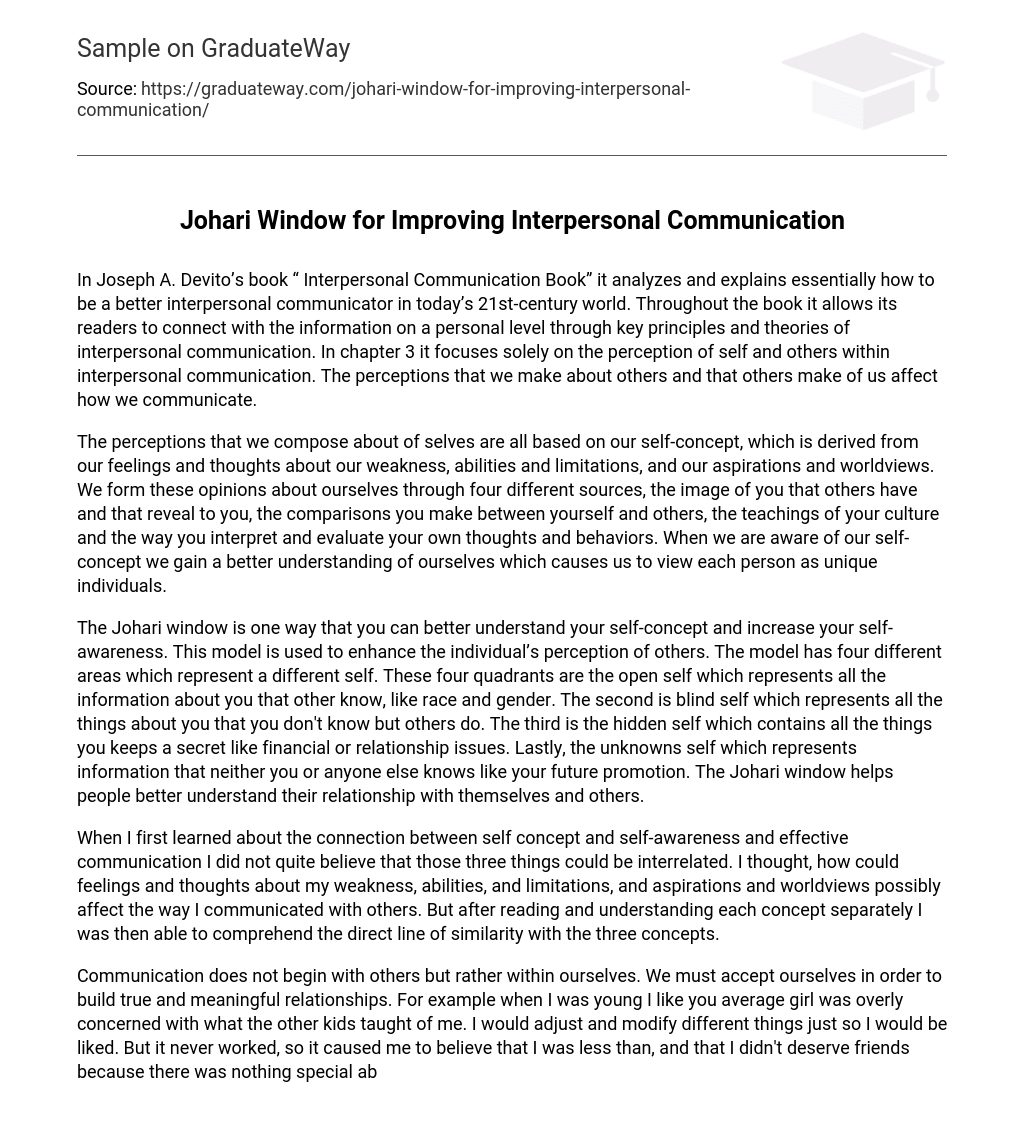In Joseph A. Devito’s book “ Interpersonal Communication Book” it analyzes and explains essentially how to be a better interpersonal communicator in today’s 21st-century world. Throughout the book it allows its readers to connect with the information on a personal level through key principles and theories of interpersonal communication. In chapter 3 it focuses solely on the perception of self and others within interpersonal communication. The perceptions that we make about others and that others make of us affect how we communicate.
The perceptions that we compose about of selves are all based on our self-concept, which is derived from our feelings and thoughts about our weakness, abilities and limitations, and our aspirations and worldviews. We form these opinions about ourselves through four different sources, the image of you that others have and that reveal to you, the comparisons you make between yourself and others, the teachings of your culture and the way you interpret and evaluate your own thoughts and behaviors. When we are aware of our self-concept we gain a better understanding of ourselves which causes us to view each person as unique individuals.
The Johari window is one way that you can better understand your self-concept and increase your self-awareness. This model is used to enhance the individual’s perception of others. The model has four different areas which represent a different self. These four quadrants are the open self which represents all the information about you that other know, like race and gender. The second is blind self which represents all the things about you that you don’t know but others do. The third is the hidden self which contains all the things you keeps a secret like financial or relationship issues. Lastly, the unknowns self which represents information that neither you or anyone else knows like your future promotion. The Johari window helps people better understand their relationship with themselves and others.
When I first learned about the connection between self concept and self-awareness and effective communication I did not quite believe that those three things could be interrelated. I thought, how could feelings and thoughts about my weakness, abilities, and limitations, and aspirations and worldviews possibly affect the way I communicated with others. But after reading and understanding each concept separately I was then able to comprehend the direct line of similarity with the three concepts.
Communication does not begin with others but rather within ourselves. We must accept ourselves in order to build true and meaningful relationships. For example when I was young I like you average girl was overly concerned with what the other kids taught of me. I would adjust and modify different things just so I would be liked. But it never worked, so it caused me to believe that I was less than, and that I didn’t deserve friends because there was nothing special about me. It wasn’t until I learned that I had to love me for who I was created to be did things finally begin to change. I had a different walk ,smile and overall a total mental makeover. It is only we remove our ‘masks “ in life and become self aware of all the things that make us unique can true connections finally occur.
I was also very skeptical of the Johari window also. So I decided to conduct an experiment to check the validity of this technique. I allowed by friends to do my hidden self on the Johari window. I can honestly say the this theory has changed the way I viewed myself. I was very surprised to see that my hidden self was so large compared to the other three quadrants. By friends thought that I was kind, helpful and understanding. But they said that I seemed to keep a lot of information to myself so now I am trying to bit open towards them . Overall this chapter has taught me By knowing ourselves we can communicate on a deeper interpersonal level.





